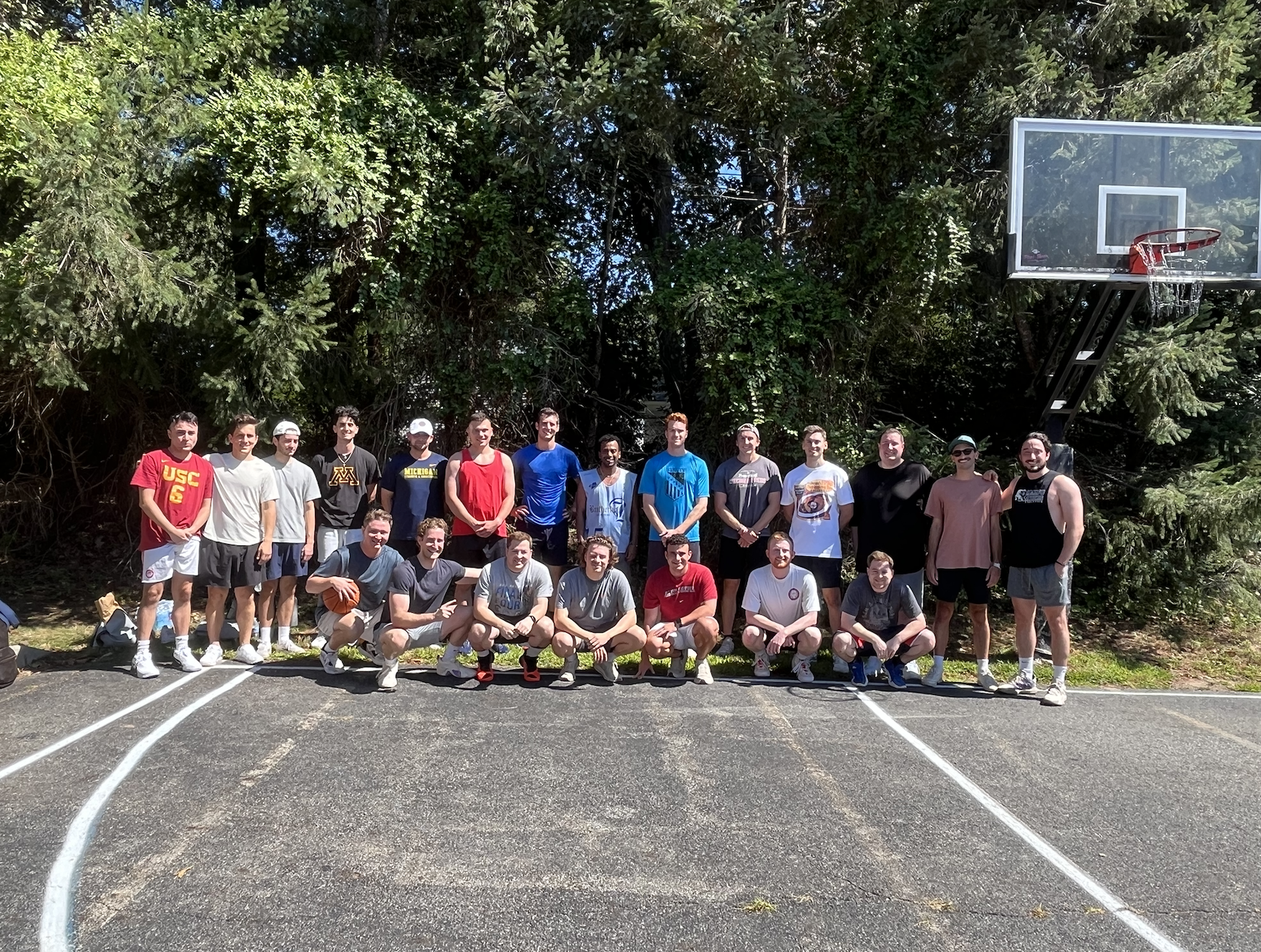How To Lose Belly Fat
I was jamming to some 80s tunes, cold brew in hand, when Paul Simon sang:
“A man walks down the street, he says, ‘Why am I soft in the middle now?
Why am I soft in the middle? The rest of my life is so hard…’”
And I thought, “Eureka. I help people with that!”
You ever feel like Paul?
Life’s busy, you’re juggling work, family, and a dozen other things. You try to eat well. Stay active. But the belly fat isn’t budging. You don’t need a six-pack. You just want to feel like yourself again: leaner, stronger, more in control. Your problem isn’t motivation, genetics, or missing some magic supplement. It’s the noise—bad advice, quick fixes, and routines built for someone else’s life.
This article isn’t that.
This is a clear, no-fluff guide to losing belly fat that actually works—especially if you're 35+, stretched thin, and d-o-n-e wasting time.
1. You Can’t Spot-Reduce Belly Fat
Let’s clear this up: You can’t pick where your body burns fat. That’s not how it works.
Doing ab workouts won’t make your stomach leaner—just like doing curls won’t shrink your arms. Fat loss is systemic, not local. Your body decides where it comes off first… and last. And for most people? The belly is usually last.
That’s not a sign something’s wrong—it’s how most bodies work.
Where you store fat is mostly determined by genetics, age, and hormones. Stress adds another wrinkle. Chronic stress raises cortisol, which doesn’t directly cause belly fat—but it can make it easier to gain fat if you’re overeating. Cortisol ramps up cravings, messes with sleep, and nudges your body to hold fat around the waist.
So if you’ve ever felt like “I’m doing everything right, but this gut won’t budge”—you’re not crazy.
It’s common. And it’s fixable.
2. Dial In Nutrition First
If you’re not losing fat, it’s almost always a food problem.
Not a workout problem. Not a metabolism issue. Not your age, hormones, or step count. It starts with a consistent calorie deficit. Not starvation. Not cutting carbs. Just eating a little less than you burn—on repeat.
That’s the science. The hard part? Modern life makes overeating effortless:
High-calorie food everywhere
“Healthy” snacks that sneak in 600+ calories
Portions twice the size you think they are
A hunger signal that lies to you when you’re stressed, tired, or underslept
This is why tracking—even for a week or two—can be a game-changer. It gives you clarity. It shows the gap between what you think you're eating and what you actually are.
But here’s the part most people miss…
It’s not just about eating less. It’s about eating more of the good stuff.
Two things change everything:
Protein — keeps you full, supports muscle, helps burn more calories
Fiber — slows digestion, curbs cravings, regulates appetite
8 out of 10 of my clients say some version of this in the first month:
“I feel like I’m eating more food… but I’m dropping fat faster than ever.”
That’s because they’re finally eating in a way that manages hunger—instead of fighting it all day.
3. Lift Weights Like You Mean It
If you want to lose fat and actually look like you’ve lost fat—strength training isn’t optional.
Muscle is your metabolic advantage.
It burns more calories at rest
Makes you more insulin-sensitive
Shapes your body in a way cardio never will
Cardio helps with heart health and increases calorie burn . But it won’t build or preserve lean mass. That’s strength training’s job.
And here’s the part that surprises people: My own training is wildly underwhelming.
I lift 4–5 times per week for 45–60 minutes. Right now, each workout looks like this:
One big lift (squat, bench, or deadlift) — 3 hard sets
Two accessory movements (rows, lunges, dumbbell press, etc.) — 5 sets each of 5–10 reps
That’s it. No bootcamp. No burpees. No 90-minute sufferfests. But those “simple” workouts? I usually burn 500–600 calories. Why? Because I’m lifting with real intensity—weights where I’ve only got 2–3 reps left in the tank.
More sweat ≠ more progress. Better inputs = better results.
And resistance training is one of the best inputs you’ve got.
4. Walk More Than You Think You Need To
Walking doesn’t sell gym memberships or go viral on TikTok. But it might be the most underrated fat-loss tool on the planet.
It burns calories without adding stress. Hit 8–10k steps a day, and you could quietly burn 200–400 extra calories without wrecking your recovery or needing another shower.
Walking also helps:
Regulate appetite (you’re less likely to snack out of boredom)
Improve mood and focus (even 10 minutes helps)
Lower stress and cortisol (which supports fat loss instead of fighting it)
Now, you may have seen headlines saying “Exercise is overrated for fat loss.”
That’s based on research by Herman Pontzer, who showed that the body adapts to high activity by conserving energy elsewhere. But here’s the nuance: If you’ve already been walking 15,000 steps a day for the past 20 years, going to 20,000 won’t do much. But if you go from 3,000 to 10–12,000 steps? That’s a huge shift in energy output, blood sugar control, and metabolic health—especially if you’ve spent years sitting for 12+ hours a day.
Even with some compensation, the benefits are real.
Most people don’t need to go harder. They need to move more—consistently.
5. Be Consistent for 6 Weeks—Then 6 Months
If you take nothing else from this article, take this: Fat loss will always take longer than you think.
Even if you expect it to take a long time… it’ll take longer. You’ve got a full-time job. Adult responsibilities. And maybe a vacation in 3 months where you want to be lean and jacked.
I get it. But that’s just not how this works.
Here’s what usually happens:
Try something for 10 days
Doubt it
Restart on Monday
Repeat
Meanwhile, your body’s just starting to get the message. Fat loss is slow—until it isn’t. Then one day, your clothes fit different. Someone notices. You notice.
Stick with something for 6 weeks—then 6 months. Give your body one clear signal—over and over—and it will adapt.
Just not always on your timeline.
The Bottom Line
“Why am I soft in the middle now?”
Here’s your answer, Paul:
You’ve been eating slightly more than you’ve been burning—probably for months or years. Not because you’re lazy or broken, but because you’re busy, stressed, sleep-deprived… and life makes it way too easy to overdo it without realizing.
If I could go back to 1986, I’d help Paul. But I can’t—so let me help you instead. No extremes. Just a plan you can repeat—even when life gets busy.
I may not be able to make your life any less hard (you’ll need therapy and divine intervention for that)…But I can help make your belly less soft.
And show you how to keep it that way—for good.
Best,
John
P.S. Had an awesome time in New Jersey this past weekend—saw my brother, caught up with friends, and bricked about 30 layups for good measure.
3 Steps You Can Take
Apply for coaching - If you’re ready to start, you can fill out a coaching application here (it takes 90 seconds or less). Best case, you change your life. Worst case, I’ll help you draw up a road map to get closer to your goals.
Sign up for my newsletter - If you’d like to hear more, sign up for my mailing list here.
Keep learning - You can check out my other articles here. Nobody asked me to, but I’ve spent a ton of time researching everything from artificial sweeteners to saturated fat to testosterone and more, so you don’t have to.



